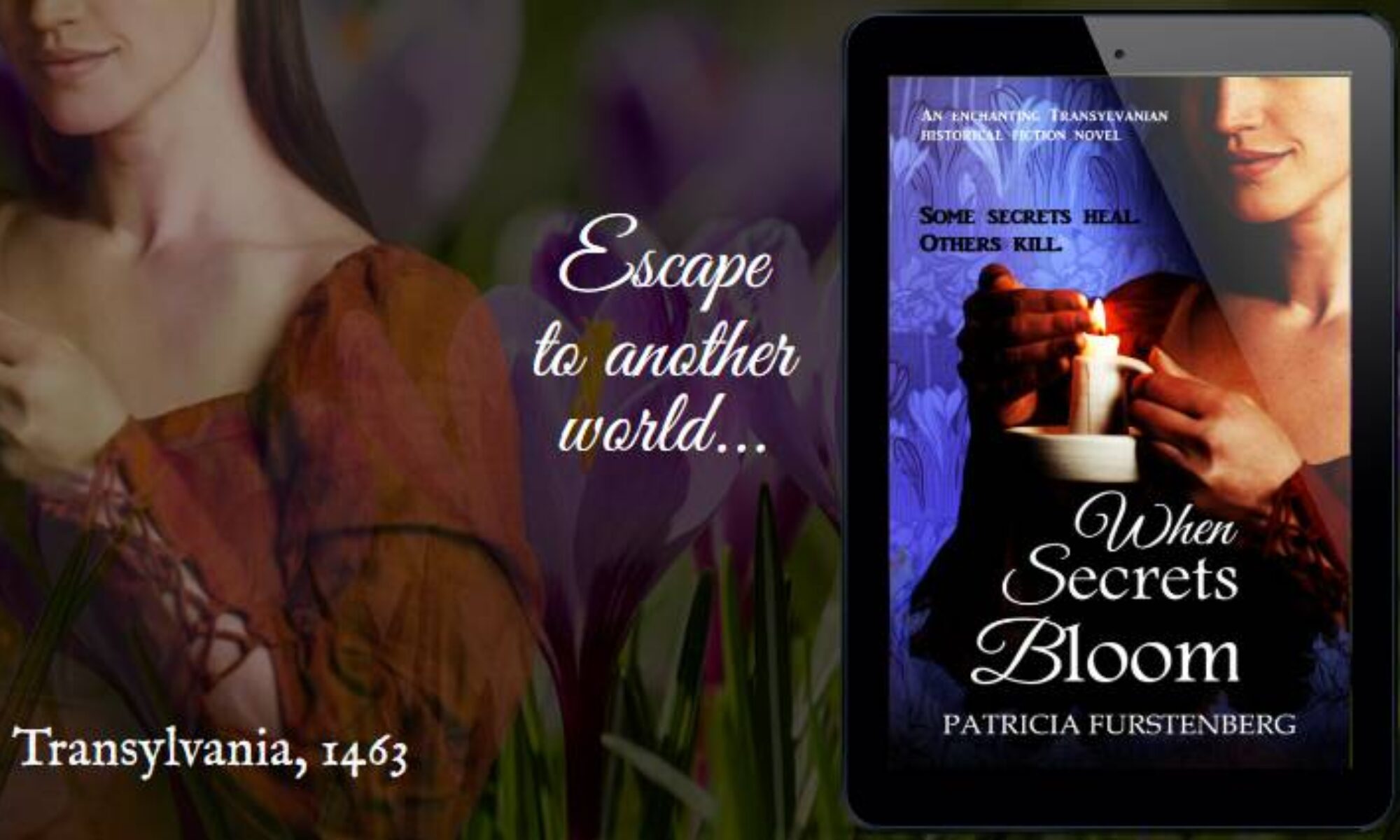Enjoy Under the Sign of the Four Turrets, a 100-word story from Sibiu, similar to the historical tales in my latest book release, Dreamland.
Under the Sign of the Four Turrets
12th century saw cannon fodder too.
They arrived on wings of hope. Making it alive over Styx River. The deal, protecting the eastern border of an expanding kingdom.
At first, fortified churches sprouted. To each guild, a tower. To build. Defend.
Not castles in the air.
This folk came for land. Stayed for freedom. The Saxons’ skills at building stone fortresses brought them countless privileges. An autonomy that, in an Europe of monarchies, was matchless.
See the four turrets adorning the church tower? It’s the stamp of a city who earned the right of capital judgment.
Who’s crossing Styx now?
Copyright © Patricia Furstenberg. All Rights Reserved.
Ahead of a little background information, here are some of the Siebenburgen we visited so far on my blog. Click on an image to open the door and read further:

Transylvanian Saxons and the Siebenbürgen
“Transylvanian Saxons are people of German ethnicity who were first invited during the 12th century by King Geza II of Hungary to settle in Transylvania and defend the eastern border of his growing kingdom. The colonists were offered economical privileges.
“Soon seven citadels of Transylvania, the Siebenburgen, blossomed: Bistrita (then Bistritz), Brasov (Kronstadt), Cluj (Klausenburg), Medias (Mediasch), Sebes (Mühlbach), Sibiu (Hermannstadt) and Sighisoara (Schassburg). Some of these citadels even had their own judge and the right to apply capital punishment, unlike other Transylvanian settlements that were subordinated to a royal judge. This was something to be proud of and it was clear in the citadel’s architecture: four turrets adorned the roof of the citadel’s church tower.
“So if you travel through Transylvania and spot four turrets, be on your best behaviour and know that you’re in a village that once held “ius gladii“, the right of capital punishment.” (Dreamland)
In Latin “ius gladii” translates to
“the right of the sword”.
In Sibiu, the Lutheran Cathedral (Saint Mary’s Evangelical Church) has four such turrets accompanying the bell tour:


I love this bit of history: the baptismal font of the Evangelical Church was made from melting the Turkish cannons captured by the warriors of Sibiu (mostly guildsmen) in 1437:

My favorite about the Lutheran Cathedral in Sibiu is the northern portal finished in 1509 by stone mason Nicolaus Lapicida who was payed a coat valued at three gold coins for his work:

Thank you for reading Under the Sign of the Four Turrets, in Sibiu.
For Dan Antion’s exciting Thursday Doors weekly challenge.
Discover more 100-word stories from Romania:





Most definitely now I have a new understanding of churches’ towers. I’m usually in my best behavior when I approach a church 🙂 , but nevertheless there’s no need to fret in Bucharest. It seems there are no four-turret churches here. Biserica Coltea used to have four turrets, but earthquakes ruined the tower and they reconstructed it differently. And anyway, it seems that four turrets have a different meaning for the Orthodox Church, namely they represent the four Evangelists. How awesome is the baptismal font! Gotta love when pagan weapons are turned into sacred objects. 🙂
Ah, Sweetie, so good to see your smiling face again 🙂
Yes, the four-towers are a serious matter 🙂 and I am quite relieve that they are confined to Transylvania and the Seven Cities 🙂
You taught me something new today, about the Orthodox Church and their four turrets representing the four Evangelists! Thank you.
I loved the baptismal font story too, I wish that something similar could happen in Ukraine!
Great story! Love the question at the end. I’ll just stay away. Haha! Lovely pictures too. 🙂
Thank you so much, Terveen!
Being Lutheran, I found that an interesting story (and would have even if not Lutheran.) 🙂 I like the bit about the baptismal font. The invitation to move reminds me of relatives of mine from Germany who were moved to Russia when Catherine the Great was ruler and wanted farmers to come.
janet
I am glad you shared your thought, Janet.
So many ended up in Russia, at one stage or another.
I read that many Jewish families fled west and central Europe during the 14th and 15th century persecution following the Black Death. They fled eastwards, to the Hungarian Empire. Then they were chased away, retreated further east. Some made home in Transylvania, more went further, to Russia and today Ukraine.
At the end of WW2, Saxon families from northern Transylvania were forcefully arrested by the and Soviet Army and taken to labour concentration camps in Siberia and Ukraine.
Sorry for the late reply, Janet, I discovered your comment in the spam folder.
Pat
I loved this 100-word story and also the interesting facts about the four turrets and the baptismal font. Thank you so much for sharing Patricia!
I am thrilled you liked it, Blanca.
I adore this baptismal font story 🙂
So interesting, Patricia – your 100 word story is a perfect match. Toni x
Thank you, Toni.